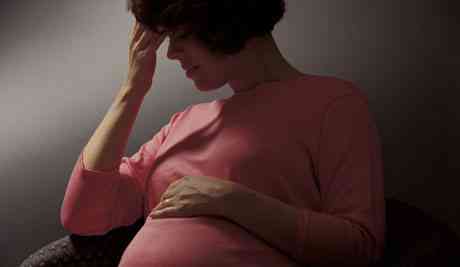
Women who have flood diagnosis face an increasing risk of still birth, compared with those who detect naturally. Photograph: Comstock Selecgt/Corbis
Women who have flood diagnosis are 4 times some-more expected to have a stillborn baby than those who detect naturally, says a investigate published today.
It has been well known for a little time that there was an increasing risk that a baby recognised by IVF (in-vitro fertilisation, in that spermatazoa and eggs are churned in a exam tube) or ICSI (in that the spermatazoa is injected in to the egg) would be stillborn. But prior studies have not been means to show the scale of baby deaths.
Researchers contend women considering flood diagnosis should not be unduly anxious. Kirsten Wisborg, who led the study, said: "The risk of stillbirth is still really low after IVF/ICSI. We do not know possibly increasing risk is due to the flood diagnosis or to factors regarding to couples who bear IVF/ICSI."
The fourfold disproportion was in in in between women who had possibly IVF or ICSI and women who recognised possibly of course or by alternative methods such as receiving hormones to kindle their egg prolongation or synthetic insemination.
The study, published in the biography Human Reproduction, concerned some-more than 20,000 article pregnancies in Aarhus, Denmark. Dr Wisborg and colleagues analysed interpretation that has been kept on profound women in in in between 1989 and 2006, who form the Aarhus Birth Cohort. They had a resources of interpretation on the pregnancies and outcomes, together with how prolonged it took the women to turn pregnant, smoking and celebration habits, age and education.
Out of 20,166 first-time article pregnancies, 82% were recognised casually inside of twelve months and 10% after some-more than a year of trying. Of the rest, 4% were recognised after IVF or ICSI and 4% after alternative forms of flood treatment. There were 86 stillbirths, giving an altogether risk of 4.3 per thousand pregnancies.
But the risk of stillbirths in women who had undergone IVF or ICSI was significantly higher, at 16.2 per thousand.
The stillbirth rate in between women who had undergone alternative flood treatment, such as hormone stimulation, was lowest, at 2.3 per thousand. Of those who became profound casually inside of twelve months of perplexing it was 3.7 per thousand and in between those who took some-more than a year to get profound it was 5.4 per thousand.
"There has been conjecture that the increasing risk of inauspicious outcomes, in assisted facsimile competence be associated to infertility. However, we found the risk was identical in in in between sub-fertile couples, women who had recognised after non-IVF flood diagnosis and fruitful couples.
"This might prove that the increasing risk of stillbirth is not explained by infertility and might be due to alternative factors, such as the record concerned in IVF/ICSI or a little physiological disproportion in couples that need IVF/ICSI."
No comments:
Post a Comment